Parameter Optimization of Vibration Reduction Structure for Low-Speed, Multi-Acting Cam Ring Motor
Abstract
1. Introduction
2. Distributor and Working Principle
3. Mathematical Model
3.1. Flow Area
3.2. Torque Pulsation Rate
4. Model Construction and Verification
4.1. Model Construction
4.2. Simulation Result
4.3. Experimental Verification
5. The Influence of The Triangular Groove Structure Parameters
5.1. The Influence of The Triangular Groove Depth Angle
5.2. The Influence of The Triangular Groove Width Angle
5.3. Influence of Length of The Triangular Groove
6. Response Surface Analysis of The Triangular Groove Design Parameters
7. Conclusions
- Adjusting the triangular groove parameters can effectively reduce the torque pulsation rate of the motor and improve its stability at low speed. Through the response surface analysis, the optimal design parameters of the triangular groove were obtained: depth angle 15.529°, width angle 91.828°, length 1.515 mm. The valve plate with these parameters can reduce the motor torque ripple rate by 55%.
- Through the response surface analysis, it can see from the F-value that the order of influence of the three factors on the motor torque pulsation rate is ; the coupling effect between the depth angle and length of the triangular groove is more obvious to reduce the torque pulsation rate than other parameter combinations.
Author Contributions
Funding
Data Availability Statement
Conflicts of Interest
References
- Mandal, S.K.; Dasgupta, K. Theoretical and experimental studies on the steady-state performance of low-speed high-torque hydrostatic drives. Part 2: Experimental investigation. Proc. Inst. Mech. Eng. Part C J. Mech. Eng. Sci. 2009, 223, 2675–2685. [Google Scholar] [CrossRef]
- Nilsson, D.; Prakash, B. Investigation into the seizure of hydraulic motors. Tribol. Int. 2010, 43, 92–99. [Google Scholar] [CrossRef]
- Dasgupta, K.; Mandal, S.K.; Pan, S. Dynamic analysis of a low speed high torque hydrostatic drive using steady-state characteristics. Mech. Mach. Theory 2012, 52, 1–17. [Google Scholar] [CrossRef]
- Chen, R.; Shrive, C.; Wan, Y.; Chen, X.; Shao, Y. Brake piston design for a new radial plunger motor. J. Phys. Conf. Ser. 2022, 2228, 12–28. [Google Scholar] [CrossRef]
- Kim, J.K.; Kim, H.E.; Jung, J.Y.; Oh, S.H.; Jung, S.H. Relation between pressure variations and noise in axial type oil piston pumps. KSME Int. J. 2004, 18, 1019–1025. [Google Scholar] [CrossRef]
- Ye, S.G.; Zhang, J.H.; Xu, B. Noise reduction of an axial piston pump by valve plate optimization. Chin. J. Mech. Eng. 2018, 31, 57. [Google Scholar] [CrossRef]
- Xu, B.; Sun, Y.H.; Zhang, J.H.; Sun, T.; Mao, Z.B. A new design method for the transition region of the valve plate for an axial piston pump. J. Zhejiang Univ. 2015, 3, 229–240. [Google Scholar] [CrossRef]
- Wang, D.Y.; Chen, C.C.; Dong, H.K. Investigation of the Pressure Fluctuation of Plunger chambers with Variable Slot Geometry. Machines 2023, 11, 225. [Google Scholar] [CrossRef]
- Sjödin, U.I.; Olofsson, U.L.O. Initial sliding wear on piston rings in a radial piston hydraulic motor. Wear 2003, 254, 1208–1215. [Google Scholar] [CrossRef]
- Pettersson, U.; Jacobson, S. Textured surfaces for improved lubrication at high pressure and low sliding speed of roller/piston in hydraulic motors. Tribol. Int. 2007, 40, 355–359. [Google Scholar] [CrossRef]
- Zhang, X.L.; Zhang, J.H.; Xu, B.; Yang, Z.Q.; Zhao, Q.; Zhang, H.J. The effect of slotted hole on minimum oil film thickness of piston in radial piston hydraulic motor. In Proceedings of the ASME/BATH 2021 Symposium on Fluid Power and Motion Control, Online, 19 October 2021. [Google Scholar]
- Zhang, X.L.; Zhang, J.H.; Zhang, H.J.; Xu, B. Optimized design of cam ring curve of cam lobe radial-piston motor. J. Huazhong Univ. Sci. Technol. 2021, 49, 30–35. [Google Scholar]
- Zhang, C.; Tan, H.; Fang, Y.; Zhang, X.; Yang, Y.; Duan, Y.; Zhang, J. Deformation pre-compensated optimization design of cam ring for low pulsation hydraulic motors. J. Zhejiang Univ. 2023, 24, 130–145. [Google Scholar] [CrossRef]
- Kosodo, H.; Nara, M.; Kakehida, S.; Imanari, Y. Experimental research about pressure-flow characteristics of V-notch. Proc. JFPS Int. Symp. Fluid Power 1996, 1996, 73–78. [Google Scholar] [CrossRef][Green Version]
- Mo, T.; Deng, B.; Ke, J.; Liu, H.L.; Wang, G.Z. Simulation Analysis of Valve Plate of Axial Piston Water Motor Based on CFD. Mach. Tool Hydraul. 2015, 43, 182–184, 216. [Google Scholar]
- Ni, J.; Feng, G.D.; Wang, Z.Q.; Gao, D.R. Optimized design of hydraulic motor with inner curve end face distribution. J. Zhejiang Univ. 2017, 51, 946–953. [Google Scholar]
- Na, C.L. Calculation of orifice area of triangle groove. J. Gansu Polytech. Univ. 1993, 19, 45–48. [Google Scholar]
- Wang, Z.Q.; Xiang, J.B.; Fu, Q.; Wood, R.J.; Wang, S.C. Study on the friction performance of textured surface on water hydraulic motor piston pair. Tribol. Trans. 2022, 65, 308–320. [Google Scholar] [CrossRef]
- Jin, Y.; Liu, S.J. Response surface method-based fatigue reliability analysis of rolling bearing considering thermoelastic-hydrodynamic lubrication effect. J. South China Univ. Technol. 2017, 45, 84–90. [Google Scholar]
- Hou, S.P.; Yu, H.Y.; Gong, H.X.; Xu, H.S. Cushioning performance optimization of carrying and docking device for manned carrier. J. Huazhong Univ. Sci. Technol. 2020, 48, 109–114. [Google Scholar]
- Colombo, F.; Della Santa, F.; Pieraccini, S. Multi-objective optimisation of an aerostatic pad: Design of position, number and diameter of the supply holes. J. Mech. 2020, 36, 347–360. [Google Scholar] [CrossRef]
- Dai, W.; He, L.; Pan, Y.; Zhang, S.P.; Hou, L. Improved Vehicle Vibration Control through Optimization of Suspension Parameters Using the Response Surface Method and a Non-Linear Programming with a Quadratic Lagrangian Algorithm. Actuators 2023, 12, 297–314. [Google Scholar] [CrossRef]
- Ren, J.; Zhou, F.; Wang, N.; Hu, G. Multi-objective optimization design and dynamic performance analysis of an enhanced radial magnetorheological valve with both annular and radial flow paths. Actuators 2022, 11, 120–144. [Google Scholar] [CrossRef]
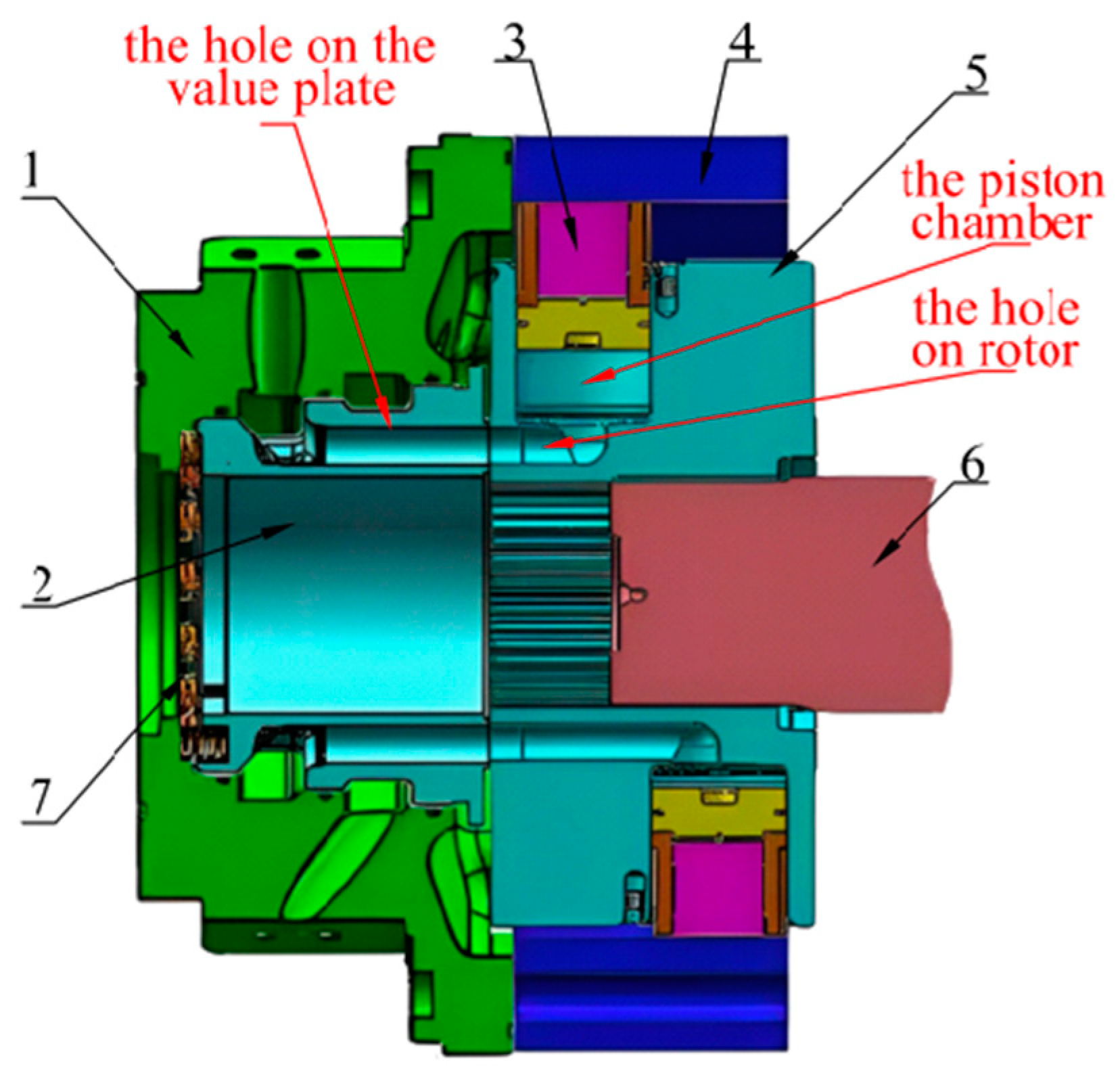

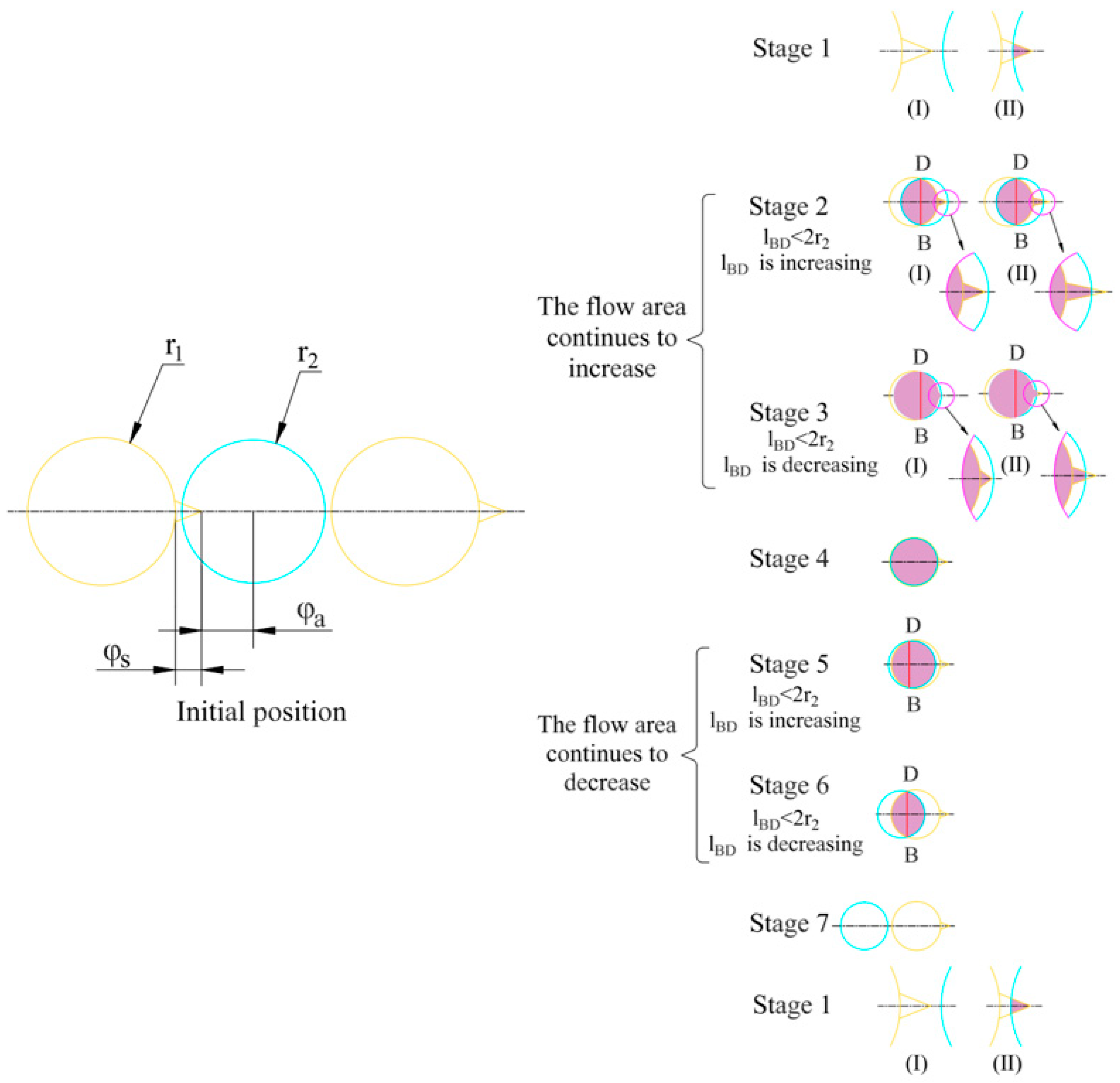
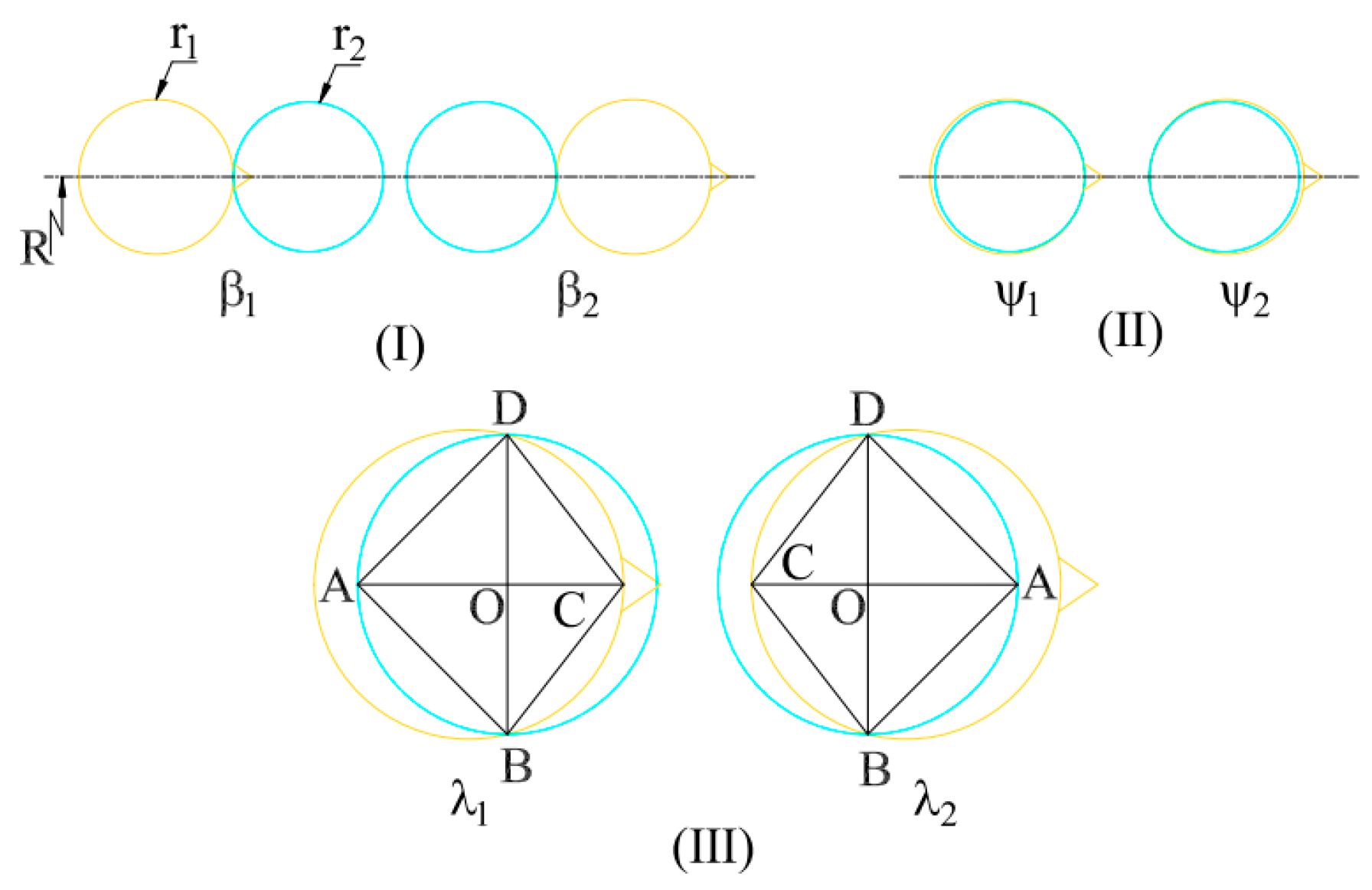


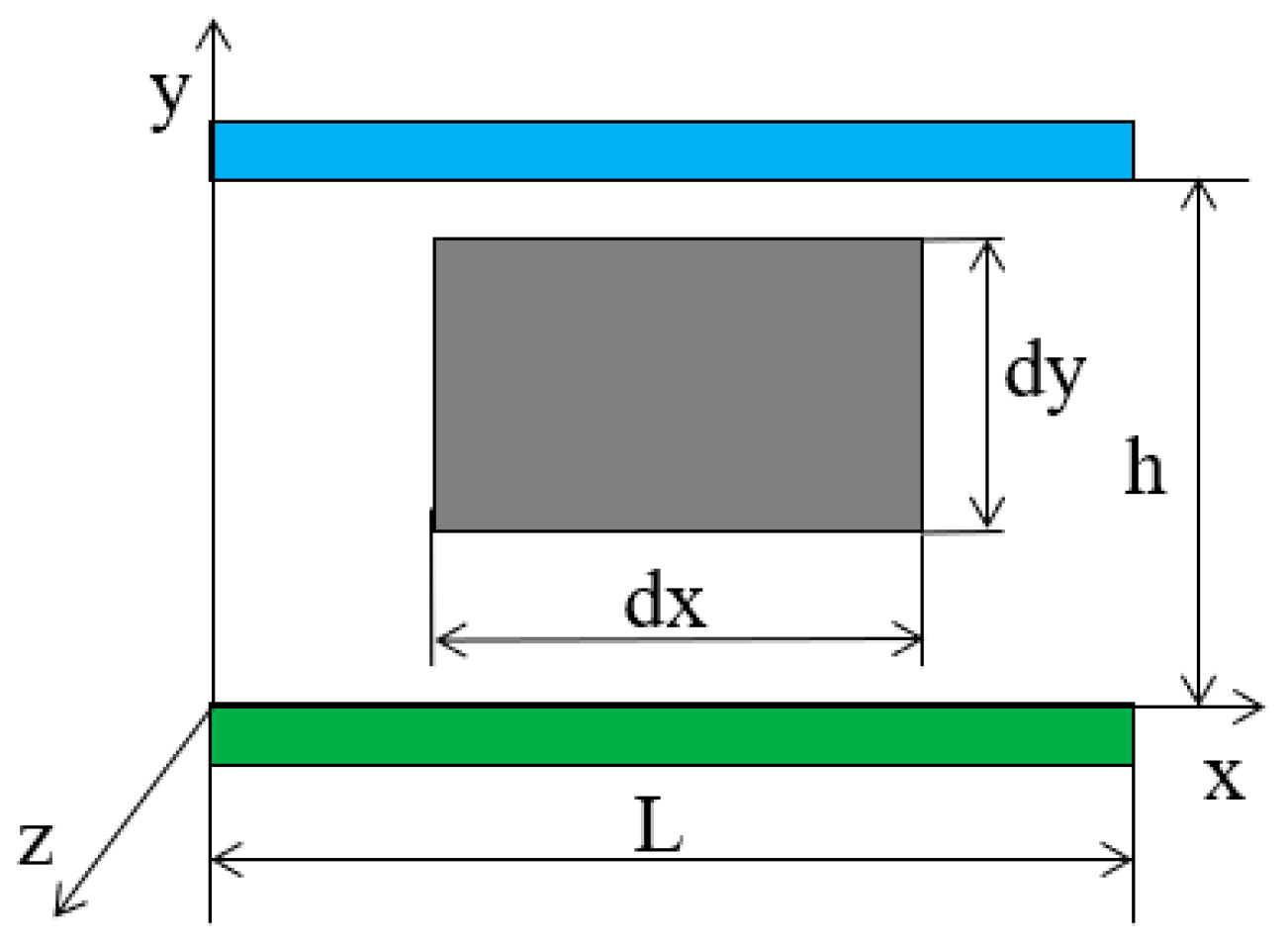

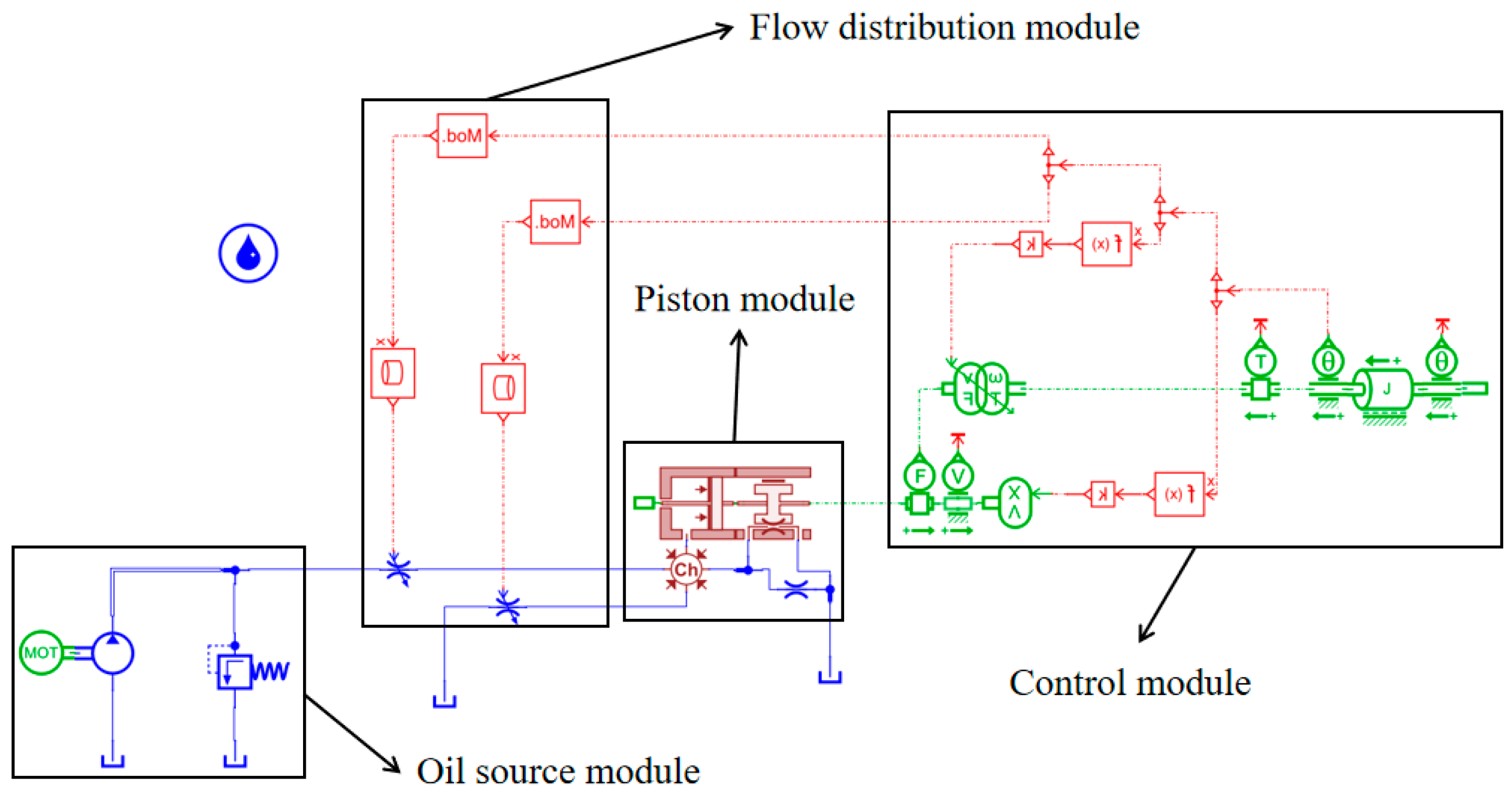
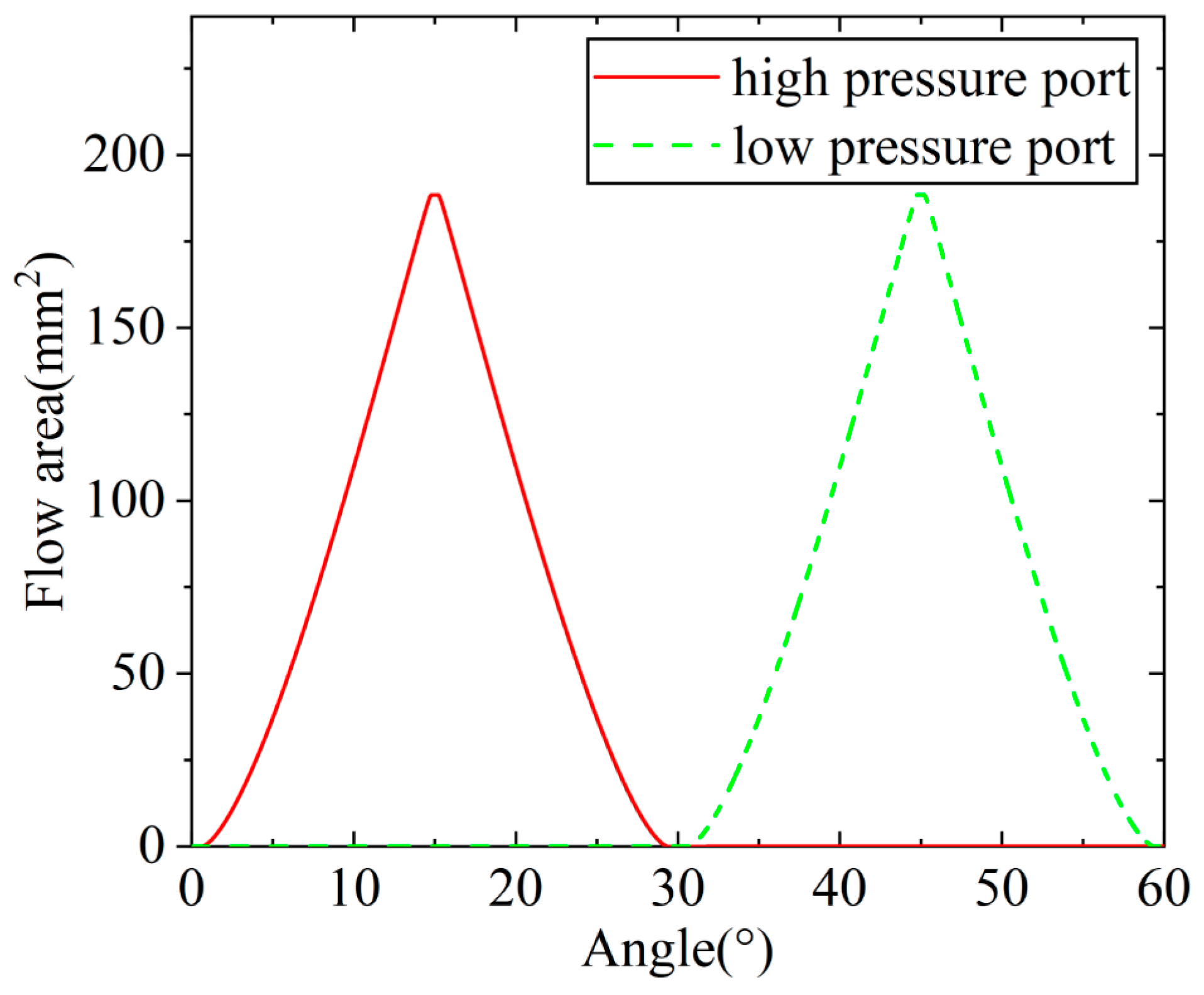


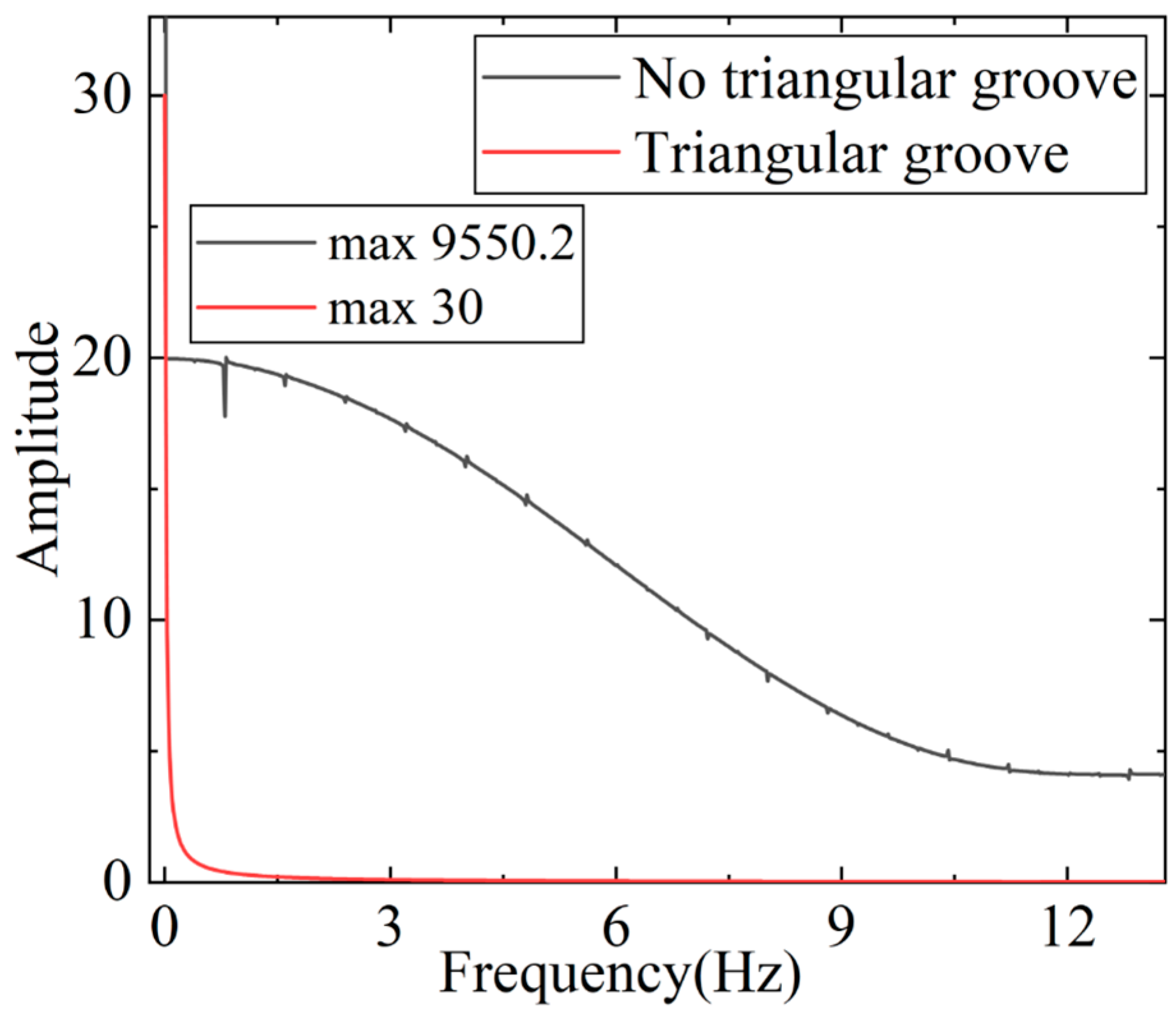



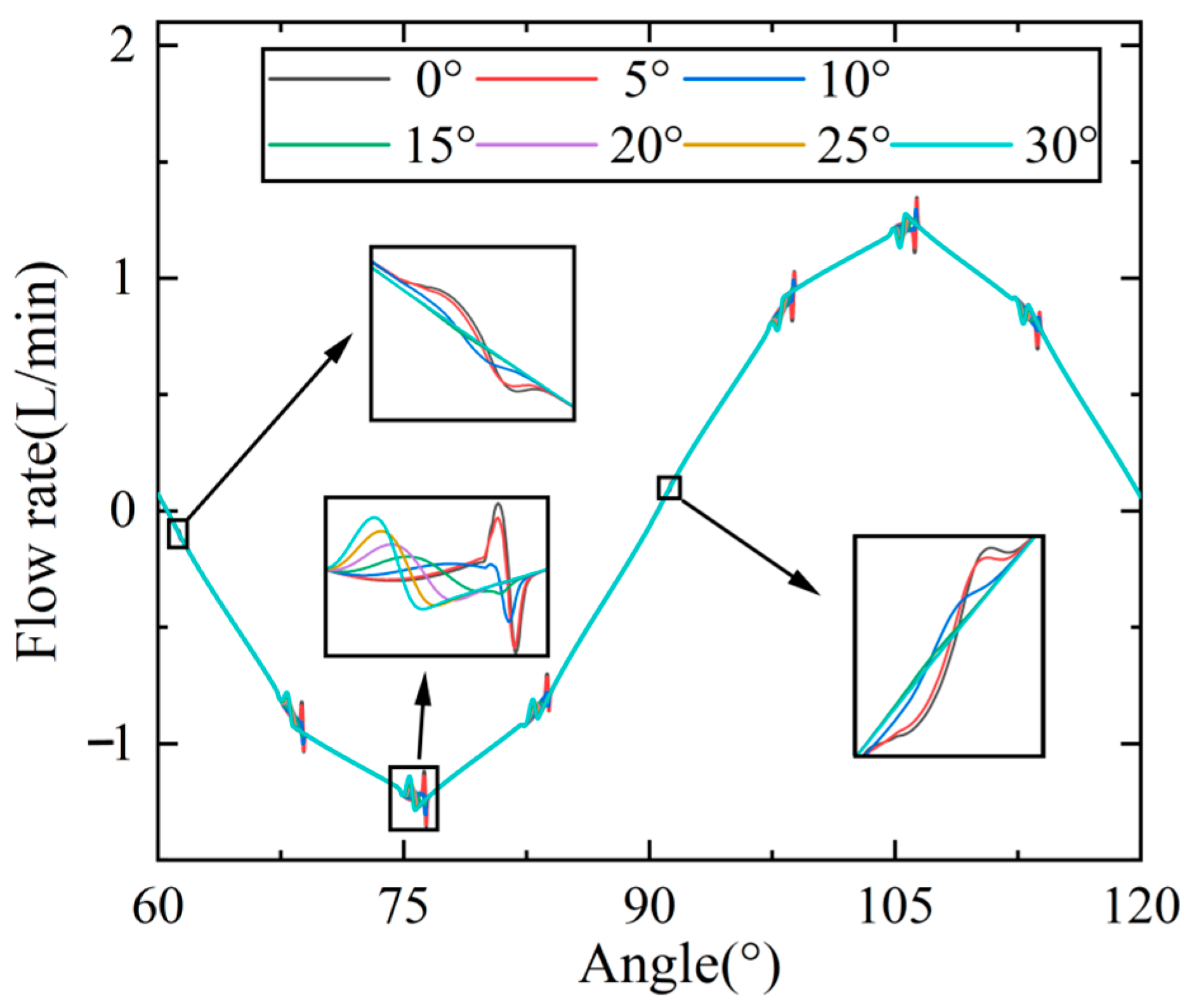


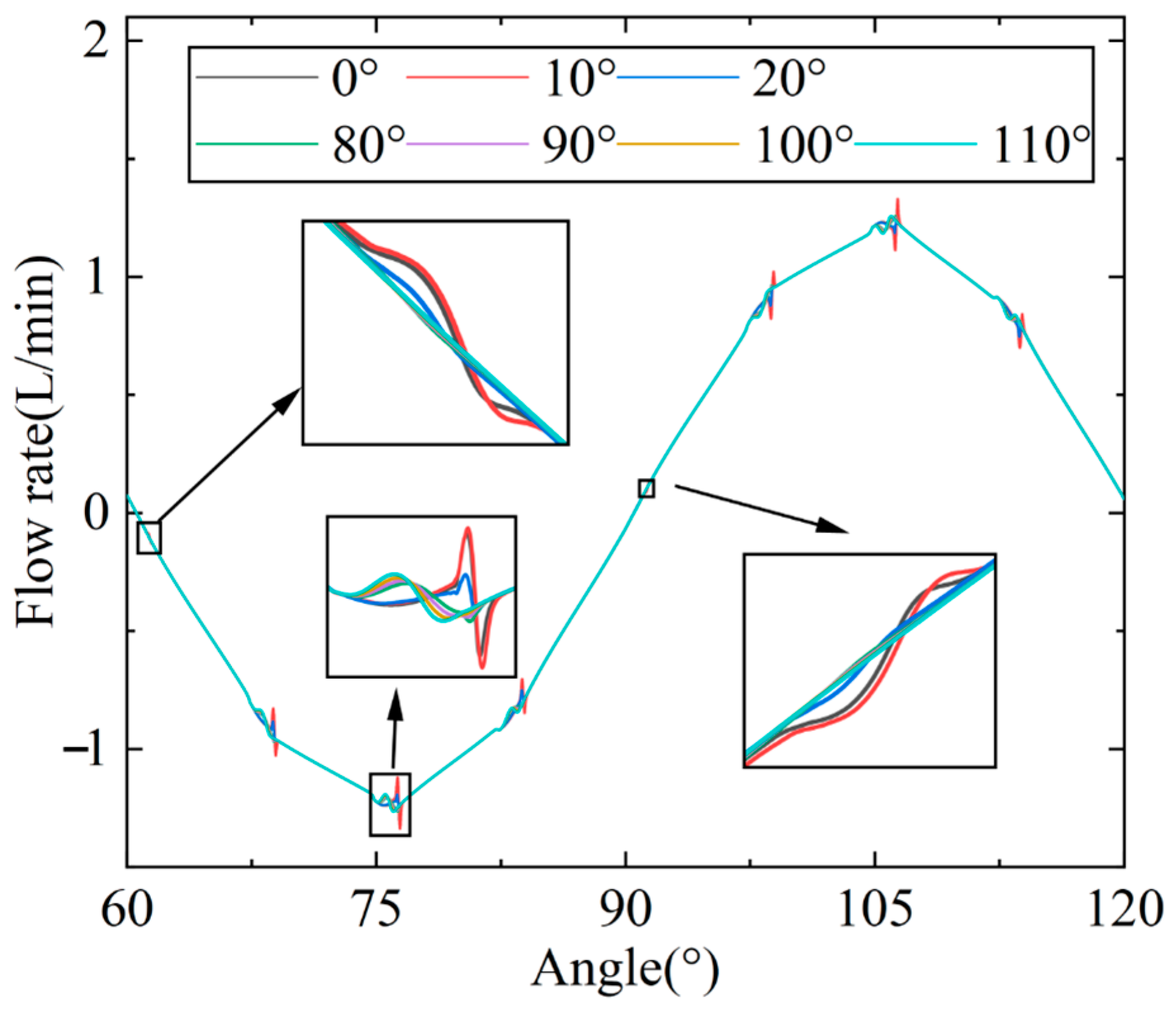
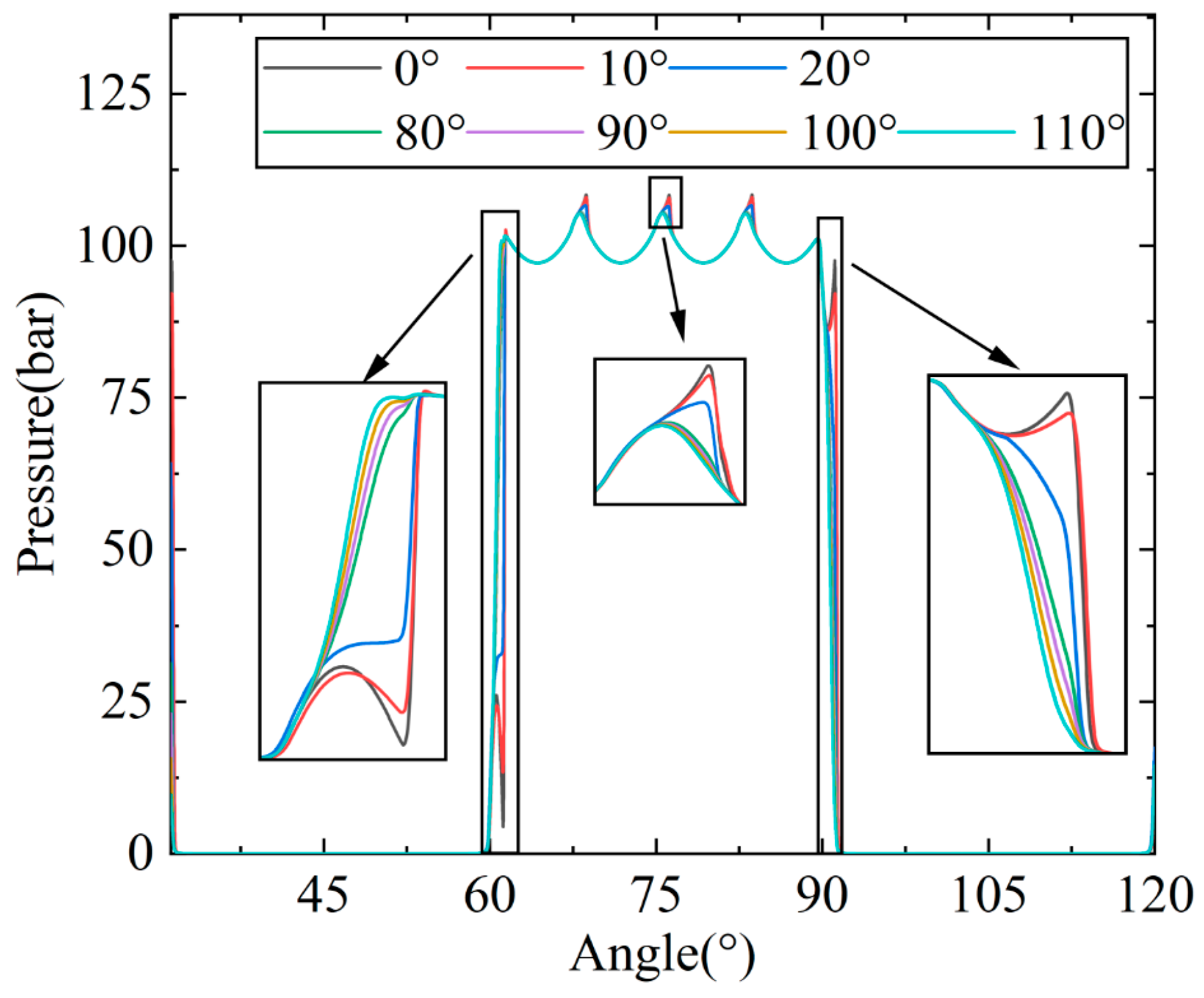


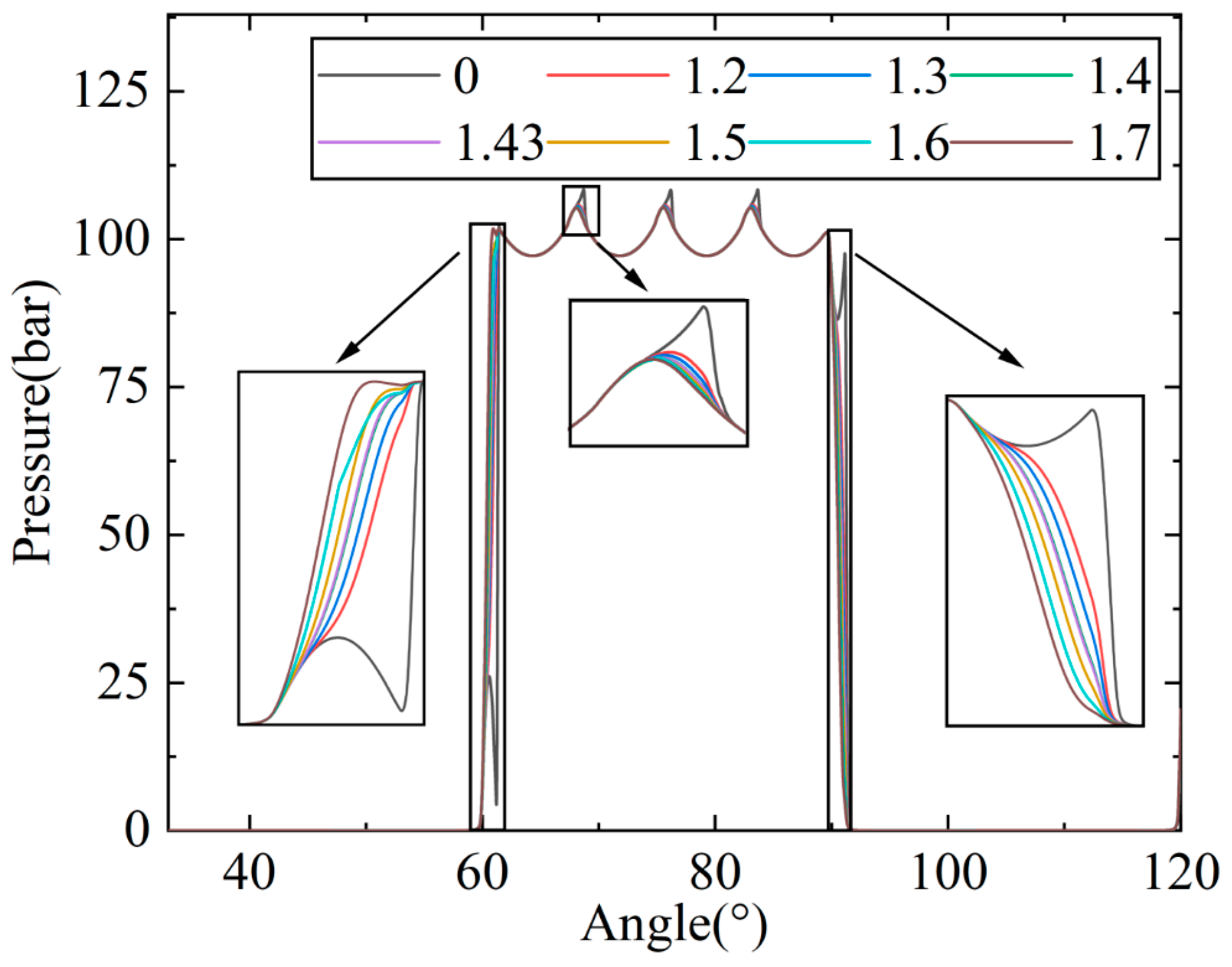
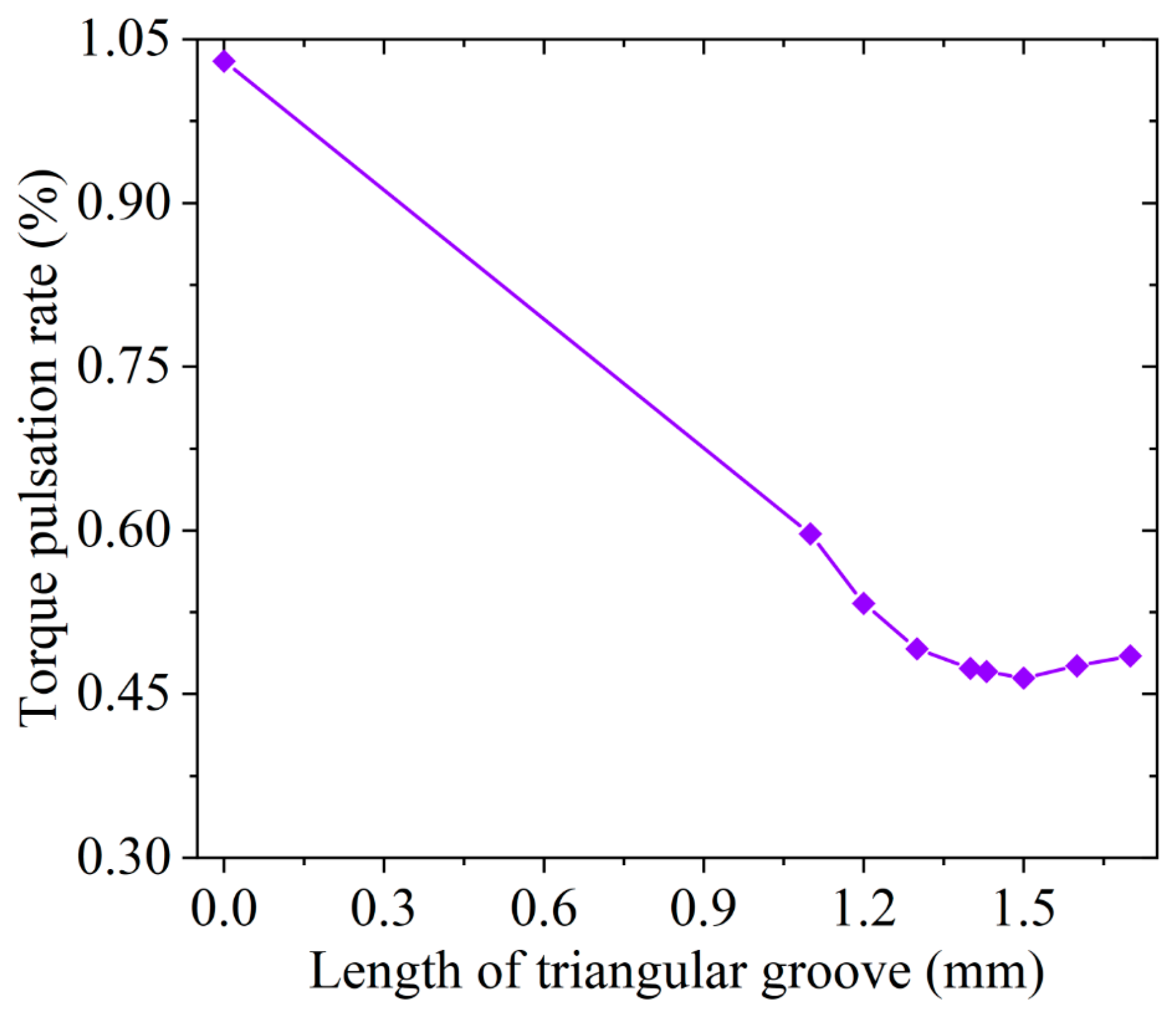
| Parameter Name | Parameter Value |
|---|---|
| piston diameter/mm | 58 |
| gap between piston and piston chamber/mm | 0.01 |
| valve plate gap/mm | 0.01 |
| outlet volume/mm3 | (first row) 29.987 (second row) 38.73 |
| motor speed/r/min | 1 |
| motor displacement/L/r | 6.08 |
| Source | Sum of Squares | df | Mean Square | F-Value | p-Value | Significance or Non-Significance |
|---|---|---|---|---|---|---|
| Model | 0.0387 | 9 | 0.0043 | 531.89 | <0.0001 | Significance |
| A-Depth angle | 0.0071 | 1 | 0.0071 | 873.15 | <0.0001 | Significance |
| B-Width angle | 0.0005 | 1 | 0.0005 | 58.65 | 0.0001 | Significance |
| C-Length | 0.0023 | 1 | 0.0023 | 290.53 | <0.0001 | Significance |
| AB | 0.0018 | 1 | 0.0018 | 217.97 | <0.0001 | Significance |
| AC | 0.0078 | 1 | 0.0078 | 967.18 | <0.0001 | Significance |
| BC | 1.051 × 10−8 | 1 | 1.051 × 10−8 | 0.0013 | 0.9722 | Non-significance |
| A² | 0.018 | 1 | 0.018 | 2224.3 | <0.0001 | Significance |
| B² | 0.0002 | 1 | 0.0002 | 22.49 | 0.0021 | Significance |
| C² | 0.0004 | 1 | 0.0004 | 52.26 | 0.0002 | Significance |
| Residual | 0.0001 | 7 | 8.082 × 10−6 | |||
| Lack of Fit | 0.0000 | 3 | 0.0000 | 3.43 | 0.1325 | Non-significance |
| Pure Error | 0.0000 | 4 | 3.961 × 10−6 | |||
| Cor Total | 0.0387 | 16 | ||||
| R2 | 0.9985 | |||||
| R2adj | 0.9967 | |||||
| R2pred | 0.9825 | |||||
| Adeq Precision | 80.0716 | |||||
| CV | 0.5751% |
| No The Triangular Groove | The Triangular Groove | ||
|---|---|---|---|
| Response Surface Analysis | Model Verification | ||
| Torque pulsation rate | 1.03% | 0.446% | 0.46% |
Disclaimer/Publisher’s Note: The statements, opinions and data contained in all publications are solely those of the individual author(s) and contributor(s) and not of MDPI and/or the editor(s). MDPI and/or the editor(s) disclaim responsibility for any injury to people or property resulting from any ideas, methods, instructions or products referred to in the content. |
© 2023 by the authors. Licensee MDPI, Basel, Switzerland. This article is an open access article distributed under the terms and conditions of the Creative Commons Attribution (CC BY) license (https://creativecommons.org/licenses/by/4.0/).
Share and Cite
An, G.; Wang, W.; Dong, H.; Liu, B.; Song, W.; Hu, Z. Parameter Optimization of Vibration Reduction Structure for Low-Speed, Multi-Acting Cam Ring Motor. Actuators 2023, 12, 388. https://doi.org/10.3390/act12100388
An G, Wang W, Dong H, Liu B, Song W, Hu Z. Parameter Optimization of Vibration Reduction Structure for Low-Speed, Multi-Acting Cam Ring Motor. Actuators. 2023; 12(10):388. https://doi.org/10.3390/act12100388
Chicago/Turabian StyleAn, Gaocheng, Wenkang Wang, Hongquan Dong, Baoyu Liu, Wei Song, and Zhenhua Hu. 2023. "Parameter Optimization of Vibration Reduction Structure for Low-Speed, Multi-Acting Cam Ring Motor" Actuators 12, no. 10: 388. https://doi.org/10.3390/act12100388
APA StyleAn, G., Wang, W., Dong, H., Liu, B., Song, W., & Hu, Z. (2023). Parameter Optimization of Vibration Reduction Structure for Low-Speed, Multi-Acting Cam Ring Motor. Actuators, 12(10), 388. https://doi.org/10.3390/act12100388






